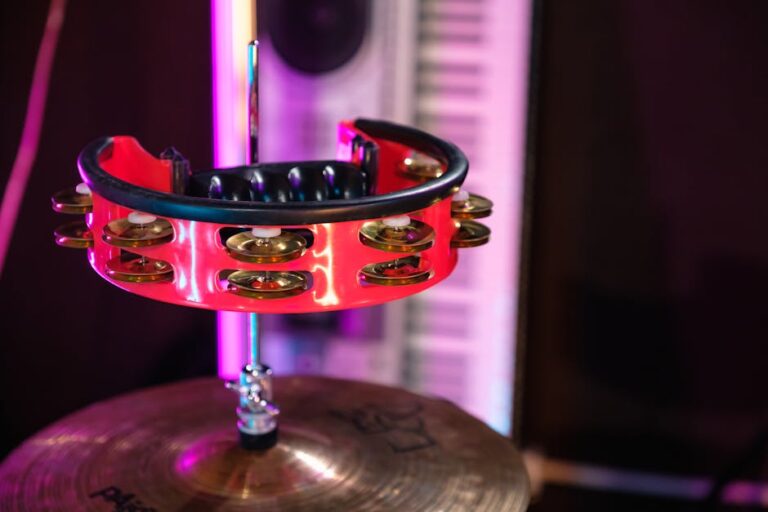Table of Contents
Right, you want to talk about keeping those big beasts of the construction world running. Maintenance systems, they call ’em. Me? I just call it trying to stop a hundred grand worth of metal from turning into scrap iron faster than a politician changes their mind. Been doing this job, gawd help me, for over two decades. Seen more bright ideas fizzle out than a cheap firework on Bonfire Night. But this stuff, the real software for looking after your diggers and dozers, it ain’t just fancy talk. It’s about keeping the blood flowing in your operation, or watching it bleed out on the job site.
You got companies out there, they’re still doing it with clipboards and a greasy notepad shoved in a glove box. Aye, a proper shambles, that is. They wonder why a hydraulic hose busts and costs ’em a whole day’s work, plus the cost of hiring a stand-in rig. It’s a joke. These machines, they’re not like your grandpa’s old Ford pickup, bless his soul. They’re complex. They’ve got sensors, they talk to satellites. Or they should be, anyway. Most of these outfits, they buy a twenty-ton excavator and then treat it like a wheelbarrow. Daft, I tell ya. Just daft.
Why Bother with all this Tech, Anyway?
I had a bloke, chap out of Stockton-on-Tees, proper Geordie, running a small concrete firm, always complaining about his mixers. “They’re always down, Bill,” he’d whine. “Costin’ us a fortune.” And I’d look at him, thinking, “Are you tracking anything? Do you know when the last oil change was?” Nah. He was just running ’em ’til they coughed and died. Then it was a rush, panic stations, pay top dollar for a repair, and watch the calendar fill up with missed deadlines. That’s what this stuff stops. Or at least, it helps. It ain’t magic, mind you.
You hear people say, “What’s the big deal? Just fix it when it breaks.” Yeah, sure, and I’ll fly to the moon on a broomstick. That kind of thinking? That’s what’ll put you out of business faster than a dodgy curry. Proactive, they say. Predictive. Sounds like something out of a sci-fi flick, but it’s really just smart management. Knowing a bearing is getting wobbly before it grinds to a halt. Knowing when a filter needs changing before the engine starts gulping crud. Simple, really. Or should be.
Trimble Viewpoint and the Construction Hustle
Take `Trimble Viewpoint`, for instance. These guys, they’ve been around. They know construction. They’ve got modules that tie into everything from accounting to project management. And yeah, equipment. It’s meant to give you a full picture, not just one little slice. You can track hours, fuel burn, service intervals. It’s not just a spreadsheet on steroids. It’s a whole picture, a proper dashboard of what your gear is doing, where it is, and when it needs a bit of love. My brother-in-law, a real old school contractor from Orange County, he swore by something similar, said it cleaned up his act something shocking. He hated computers, mind you, but even he could see the sense in not losing money.
And that’s the thing, isn’t it? It’s not about the software, not really. It’s about the moolah. What’s it costing you when that crane sits idle for three days because nobody bothered to check the wire ropes? What about the fines for delayed projects? That’s where the pain hits. And that’s what these systems are supposed to ease. Some do, some… well, some are a bit more bark than bite, if we’re being honest.
Is This Just for the Big Dogs?
Someone usually asks me, “Is all this fancy stuff just for the big outfits, the ones with a thousand machines?” And I usually tell ’em, “You got more than three pieces of heavy gear, you ought to be thinking about it.” Even a small outfit with a couple of excavators and a skid steer. You think you can keep all that in your head? You can’t. You’ll forget. And forgetting costs you. It always does.
Caterpillar’s VisionLink – The Yellow Machine Connection
Then you got `Caterpillar` themselves, with their `VisionLink`. Makes sense, right? If you’re running a fleet of yellow iron, you want something that talks directly to it. They’ve got their telematics, their Product Link system, built right into the machines. So VisionLink pulls all that data. Hours, location, fuel levels, diagnostic codes. That’s pretty handy. It tells you if someone’s just letting a dozer idle all day, burning fuel for nothing. Or if a machine is sitting somewhere it shouldn’t be, like a Sunday afternoon joyride. I remember one site, up near Newcastle, a big quarry project, they had `VisionLink` reporting every single machine. The site foreman, a hard nut, said it saved ’em a packet on fuel alone just by knowing who was leaving engines running when they shouldn’t be. He called it “the Big Brother that pays for itself.” Gotta respect that.
But here’s the kicker with some of these, you’re locked into one brand. What if you’ve got a mixed fleet? A Cat here, a Komatsu there, a Volvo over yonder. Happens all the time. Most folks don’t buy all their kit from one dealer. So you need something that plays nice with everyone, or you end up with five different systems, which is more of a headache than no system at all.
What if My Crew Don’t Like Computers?
Another thing I hear, “My blokes won’t use it, Bill. They’re old school.” Yeah, and I’m a spring chicken. Look, it’s 2025. You think your phone is the only smart device out there? These systems, the decent ones, they try to make ’em easy. Apps for tablets, for phones. Point and click. No, it ain’t like filling out a paper form, but it’s often a damn sight quicker once you get the hang of it. You want ’em to buy in? Show ’em how it makes their job easier, not harder. Show ’em it gets their gear fixed faster, so they ain’t sitting around scratching their heads.
Hexagon’s HxGN EAM: The Serious Business
`Hexagon`, they’ve got `HxGN EAM`. Now, this is a serious bit of kit, a proper enterprise asset management system. Used to be Infor EAM. These are for the big boys, often the ones running multiple sites, hundreds of assets. They’ve got a mountain of functionality. Everything from work orders, spare parts inventory, warranty tracking, even predicting failures. This ain’t just a basic tracker; this is the whole shebang. For a place like a big plant hire firm down in Texas, with yards full of equipment and constant movement, this sort of thing is a must. They’re talking about millions of dollars tied up in machinery. You can’t just guess with that kind of money on the line. It’s like trying to navigate the Grand Canyon blindfolded.
But with something that powerful, you’ve got to put the work in. You gotta set it up right. You gotta train the people. You can’t just buy it, plonk it down, and expect miracles. That’s a fool’s errand. Seen too many companies buy the best software going and then use 10% of its features because they didn’t commit to it. What a waste of good money. Might as well just burn it.
Is it really worth the money?
Someone once asked me, “Is it really worth the money, Bill? This stuff ain’t cheap.” And I said, “What’s it cost you when you lose a major client because your excavator was down for a week, and you missed a crucial pour?” Or, “What’s it cost you when you buy a new part you already had in the warehouse because nobody knew?” It’s a gamble. Pay now, or pay a lot more later. Your choice, mate. Most of these systems, they pay for themselves eventually, usually quicker than you’d think. If you use ’em properly, that is.
Procore and the Site-Centric View
Then there’s `Procore`. Now, `Procore` is a bit different. It’s more of an overall construction management platform. It does a lot of things. Project management, finances, safety. But it’s got decent equipment tracking built in. So if you’re already using `Procore` for your projects, it makes sense to use their equipment module. It’s all under one roof. Less jumping between different systems, which is always a bonus. A lot of those California outfits, they swear by Procore because it tries to do everything. It tries to be the one-stop shop. Handy for getting all your ducks in a row.
The trouble with those all-in-one systems, sometimes they’re a jack of all trades, master of none. The equipment bit might not be as deep or as specialized as a dedicated CMMS (that’s `Computerized Maintenance Management System` to you and me) like, say, `eMaint` or `Limble CMMS`. They’re proper maintenance systems. Procore’s great for the overall project, but if equipment maintenance is your absolute lifeblood, you might need something more. It depends on your bread and butter, what really makes your cash register sing.
eMaint and Limble CMMS: The Maintenance Deep Dive
`eMaint`, which is part of Fluke Reliability now, and `Limble CMMS` are good examples of dedicated CMMS platforms. They live and breathe maintenance. They schedule inspections, manage parts, track work orders. They’re about making sure stuff doesn’t break in the first place, or if it does, you fix it fast. They’re often easier to get going than a massive enterprise system, especially for the mid-sized firms. You could get a firm in the Welsh Valleys, running a small fleet of specialized forestry equipment, using `Limble` without breaking the bank or needing a team of IT whizzes. They’re pretty intuitive. No rocket science there.
I remember one time, a building company outside Sydney, fair dinkum, they were using paper schedules for preventative maintenance. Found a huge grader, critical to the job, that hadn’t had a proper service in two years. Two years! Just kept going until, surprise, it didn’t. They ended up throwing `eMaint` at it, and within six months, their unscheduled downtime dropped by twenty percent. Twenty percent! That’s real money, not just numbers on a screen.
Can these systems predict future breakdowns?
Can these systems predict future breakdowns? Some claim they do. They call it “predictive maintenance.” They use algorithms, data from sensors on the machines, historical repair records. If an engine usually fails after 5,000 hours, and yours is at 4,800, it’ll flag it. If a vibration sensor shows a specific pattern that usually means a bearing is on its way out, it’ll tell you. It’s not a crystal ball, mind you. You still need human eyes and ears on the ground. But it’s a heck of a lot better than just waiting for the smoke to start pouring out. It’s like your doctor saying, “Hey, your blood pressure’s a bit high, maybe lay off the chips.” You don’t ignore it, do ya?
The Sage and Bentley Systems Angle
Then there’s `Sage`, like `Sage 100 Contractor`. This is more for the financial side, accounting, project costing. But it’ll have modules for equipment. It’s about tying the cost of running that bulldozer directly to the project it’s working on. Makes sense for bidding, for knowing your real costs. It’s not a pure maintenance system, more of an accounting system with equipment tacked on. Fine for what it is, but don’t expect it to tell you the precise torque setting for a specific bolt on a hydraulic pump.
And `Bentley Systems`. They’re big in infrastructure. Their `AssetWise` platform, for instance, it’s about managing large, complex assets over their entire lifespan. Think bridges, roads, huge public works. They’re not really for the average contractor’s fleet of skid steers. They’re for the really big, long-term stuff where the asset is the project, for decades. Different beast entirely. Important, but a different scale. What a lot of people miss is scale. What works for a massive utility firm won’t work for Joe’s Paving. And vice-versa.
What about security? All this data floating around.
What about security? All this data floating around? Good question. Crucial question. You got your whole fleet’s movements, repair history, fuel consumption, maybe even driver performance. You don’t want that stuff just sitting on some easily hackable server. Most of these legitimate companies, they take security seriously. Cloud-based systems, secure servers, encryption. They have to. Their business depends on it. If they mess that up, they’re sunk. You still gotta do your bit, though. Strong passwords. Don’t leave your tablet lying around the pub. Common sense, really. The same stuff you should be doing with your bank account, you ought to do with your business data.
Look, at the end of the day, whether you go with `Trimble Viewpoint`, `Caterpillar VisionLink`, `HxGN EAM`, or something smaller like `Limble CMMS`, it’s about control. It’s about not letting your expensive metal just waste away. It’s about getting more out of what you’ve already got. About squeezing every last bit of useful life out of those machines before they become nothing but scrap. And making sure you know when that time comes, so you can plan for it, not react to it in a panic. It’s not flashy, this stuff. No parades. But it keeps the wheels turning. And that, my friend, is what keeps the lights on. Plain and simple.












